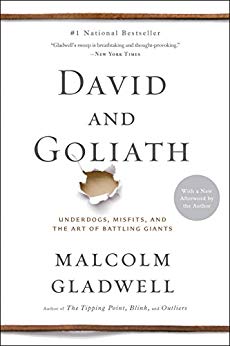

This article is an excerpt from the Shortform summary of "David and Goliath" by Malcolm Gladwell. Shortform has the world's best summaries of books you should be reading.
Like this article? Sign up for a free trial here .
A highly effective tactical move in basketball, the full-court press is rarely used. What are the advantages of the full-court press? And why don’t teams use it more often?
The full-court press is a basketball tactic, involving the entire court, in which players aggressively surround those from the other team to keep them from getting the ball across midcourt.
We’ll look at an example that demonstrates the power of the full-court press in action, while also revealing why it’s so underutilized.
The Full-Court Press: The Advantage of the Unskilled
To be frank, the full-court press is so powerful because it can be used by even the most unskilled teams. However, that doesn’t mean the full-court press is easy. It does mean that anyone can learn to employ it.
If you’re really terrible at a game, you can’t follow conventional wisdom and win—you just don’t have the skills. This means you have to be unconventional, and the full-court press is unconventional. On the other hand, your skilled opponents (who aren’t as desperate as you are) have no reason to employ the full-court press because the conventional presses work well for them. Consequently, your opponents are not prepared for the full-court press. Taking them by surprise gives you an edge.
Example: The Power of the Full-Court Press
Vivek Ranadivé, an Indian immigrant who had never played basketball, decided to coach his daughter’s National Junior Basketball team in Redwood City.
Not having a group of skilled, experienced players, and without enough time to teach them the skills to make them competitive using conventional strategies, Ranadive took advantage of two deadlines. These are moments in a basketball game when the best teams are as vulnerable as the worst:
- Deadline #1: When Team A scores, a player from Team B takes the ball out-of-bounds and must pass the ball to a teammate within 5 seconds.
- The conventional strategy used by players of Team A, now the defense, is to retreat to the other side of the court.
- The unconventional strategy used by Ranadivé’s Team A was to stand in front of Team B players and block them from receiving the pass. Flustered, the out-of-bounds Team B player often couldn’t complete the pass, giving the ball back to Ranadivé’s Team A.
- Deadline #2: If Team B does happen to get the ball into one of its player’s hands, it has 10 seconds to get the ball onto their opponent’s side of the court, at the opposite end.
- Again, the conventional strategy for Team A is to retreat to their side of the court and await their opposition.
- Just as in their response to Deadline #1, Ranadivé’s unconventional strategy had his 12-year-olds aggressively surrounding the Team B player with the ball, keeping her from getting across midcourt in 10 seconds.
This play style, the full-court press, kept the talented opponents of the Redwood City team from keeping the ball long enough to use their skills. Ranadivé’s Redwood City team of relatively unskilled players won almost all their games.
Why Did Ranadivé’s Full-Court Press Work?
- It was unexpected: People have played basketball the same way for decades–it never occurred to the teams playing Redwood City that they could play it any other way. Consequently, the opposing teams were unprepared and bewildered when confronted with the full-court press.
- It took advantage of their opponent’s weaknesses: When trying to get the ball into play within the allotted 5 or 10 seconds, even the most skilled players are vulnerable. Ranadivé developed his entire game strategy to take advantage of these moments when even the best teams are under pressure.
- It didn’t allow their opponents to capitalize on their strengths: The best basketball players are highly skilled at dribbling, rebounding, or scoring 3-pointers. The Redwood City players didn’t let their skilled opponents get close enough to the basket to use these skills.
- It used their “disadvantages” to their advantage: Most of Ranadivé’s players were new to the game and didn’t have time to learn the skills. Their lack of skill led them to work much harder than their opponents. Often, you only work that hard when you’re desperate because you don’t have the skills that may have spared you the effort.
- It was audacious: Playing a full-court press is risky–because it’s a physically aggressive tactic, the chances of fouling out are higher. It’s also exhausting.
If the Full-Court Press is So Successful, Why Isn’t Everyone Using It?
In 1971, the Fordham University Rams used the full-court press to beat the nearly unbeatable University of Massachusetts Redmen. The full-court press isn’t unknown. But in general, underdogs rarely learn from the past and use the full-court press. Why not?
Reason 1: The full-court press is hard
A full-court press involves being constantly in motion, so the Redwood City team had to be fitter than their opponents. Few but the desperate are willing to work this hard.
Reason 2: People get angry when you don’t play by their rules.
Thus, these tactics are best employed by those who don’t care if they upset some people.
If you care what others think of you, you’re less likely to use underdog tactics like the full-court press. (And it’s human nature to care what others think of you, making this difficult.)
- The coaches of opposing teams were furious that Ranadivé’s underdogs were crushing their skilled players (and that a “skinny, foreign guy” who had never played basketball was coaching the winning team); one was so upset he threw a chair, and the ref kicked him out of the building; another man threatened to beat Ranadivé up.
This example shows that the full-court press is a risky strategy for a variety of reasons. But if your team is scrappy rather than skilled, the full-court press might be your best option.
———End of Preview———

Like what you just read? Read the rest of the world's best summary of "David and Goliath" at Shortform . Learn the book's critical concepts in 20 minutes or less .
Here's what you'll find in our full David and Goliath summary :
- Why being the underdog can actually be an advantage
- Why you shouldn't be afraid of powerful giants
- Strategies to get an edge when you're overpowered






